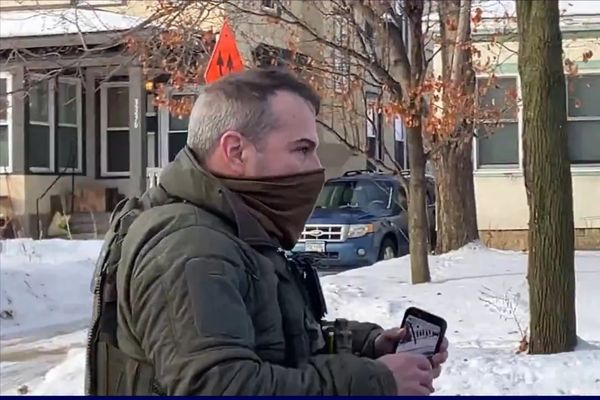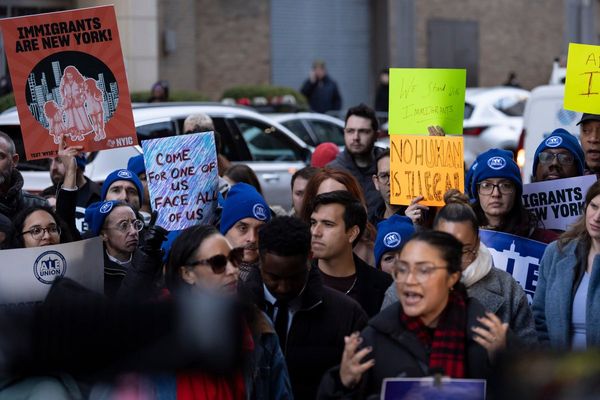WASHINGTON — Two dozen mostly rural states are set to receive a greater share of federal research money from the recently enacted science and technology funding law as lawmakers, experts and researchers push to support talented scientists outside of major research hubs such as those in California, Massachusetts and New York.
The law authorized $102 billion over five years for the National Science Foundation. About 20 percent of it goes to a separate funding track that since 1979 has been meant to steer money to researchers and scientists from universities in rural and low-income states that don’t have the same size and global reach as California’s Stanford University, the Massachusetts Institute of Technology or New York’s Columbia University.
“Geographic diversity is vital to American innovation, and enlisting the talent and expertise” of researchers around the country “is an important priority in the CHIPS and Science Act,” Sen. Roger Wicker, R-Miss., the ranking member on the Senate Commerce, Science and Transportation Committee, said at an August hearing.
Senate Democrats joined Wicker and other Republicans to back an expansion of the NSF program. They were able to keep the provision in the law despite the House version of the bill excluding it.
“We have talent all throughout the United States of America, and what do we do to better unleash that?” committee Chair Maria Cantwell, D-Wash., said at the hearing, citing a new book by tech entrepreneur Steve Case titled “The Rise of the Rest: How Entrepreneurs in Surprising Places Are Building the New American Dream.” The book says innovators who live outside the major tech hubs find it harder to get private and public funding.
The NSF program, known as the Established Program to Stimulate Competitive Research, or EPSCoR, is aimed at states and territories that received 0.75 percent or less of the agency’s budget in their most recent five-year funding.
In 2021, the 28 states and territories that met the EPSCoR criteria collectively got about 12.6 percent of NSF’s budget of $8.84 billion, according to data from EPSCoR/IDeA Foundation, a nonprofit that promotes science and technology enterprise in underfunded states. The top five states — California, Massachusetts, Maryland, New York and Texas — got 40 percent of the NSF funding.
States such as Alaska, Alabama, Idaho, Montana and Wyoming are among those that meet the criteria for underfunded states, as do Guam, the U.S. Virgin Islands and Puerto Rico.
Congress gave the NSF a goal of getting 20 percent of its total budget to underfunded states by 2029, using gradual increases.
Lawmakers feel that future scientists can’t just come from a handful of big states, said Prakash Nagarkatti, chair of the board of the EPSCoR/IDeA Foundation. “Talent is everywhere, but opportunities are not,” he said.
Nagarkatti, a professor at the School of Medicine and senior research adviser to the president of the University of South Carolina, said states still need to obtain funding through a competitive process, with a national panel of experts reviewing applications. “Maybe two or three applications out of 10” get funded, he said.
Little support for changing criteria
Rep. Bill Foster, D-Ill., a physicist by training, has pushed to change the criteria to designate an underfunded area, proposing legislation in previous Congresses but without gaining much support. As Congress considered expanding the NSF program goal last year, Foster said the formula disadvantages rural areas in a state with a large research university or benefits an elite institution.
Rural institutions in Illinois, for example, aren’t eligible for EPSCoR funding because the University of Chicago has received such large grants, he said, while Rhode Island, which is part of the EPSCoR program, can receive funds for an elite institution like Brown University.
Foster nevertheless voted for the bill.
The NSF provides three funding tracks under EPSCoR. The first track offers one award of $20 million per state or territory for a period of five years to improve physical and cyber infrastructure. The second track provides $1 million per year for four years to encourage collaboration between eligible states. And the third track offers $750,000 for up to five years to get more women, minorities and disabled participants into science and technology programs.
The NSF’s EPSCoR program also jointly funds research proposals with other organizations and provides grants to researchers for attending workshops and conferences.
The Government Accountability Office found in a recent assessment that states and territories that participated in the EPSCoR program were better able to compete for NSF funding and research funding from other federal agencies after joining the program.
The GAO also said states and territories that participated in the program “increased their success rates of research proposals submitted to and funded by NSF.”
Research institutions from underfunded states with smaller faculty rosters also perform better than their bigger peers on a “per-million dollars of grant received” basis, based on measures such as journal publications and citations, said Mridul Gautam, vice president for research and innovation at the University of Nevada, Reno.
Larger universities tend to hold more patents because applying for and holding patents costs money and requires larger staff, said Gautam, who’s also the chair of the coalition of states that participate in the EPSCoR program.
Even before formally launching the EPSCoR program in 1979, the NSF had been focused on “geographic equity,” Gautam said.
In the 1960s, NSF helped fund development programs at Tier Two universities such as Carnegie Mellon in Pittsburgh and the University of San Diego, Gautam said. “And look where they are today,” he said.
Reflecting the broad support for the EPSCoR program in Congress, lawmakers in 1993 started creating similar programs at the Energy and Agriculture departments, NASA and the National Institutes of Health.







